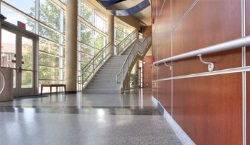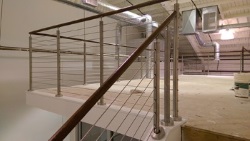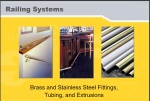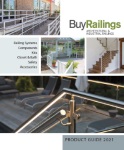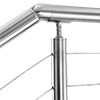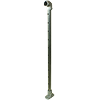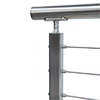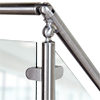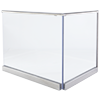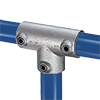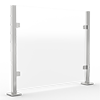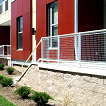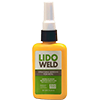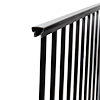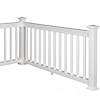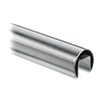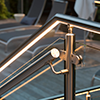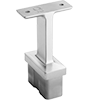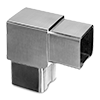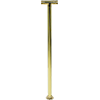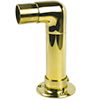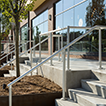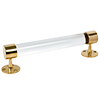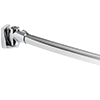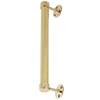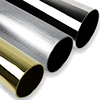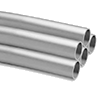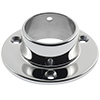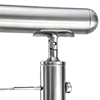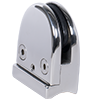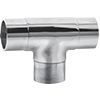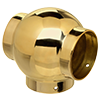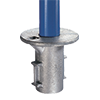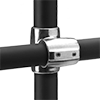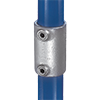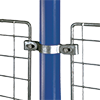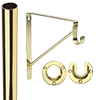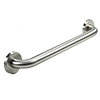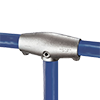10 Things You Should Know About Railing Materials
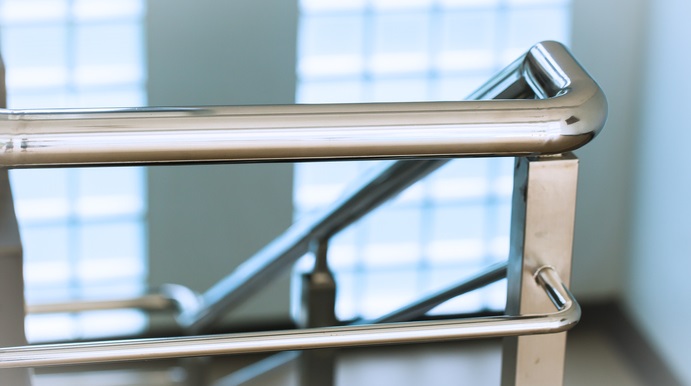
Railings are as diverse as they are functional. Railings can define the experience of the space, matching aesthetic and feel, as well as being that crucial support structure.
This is why choosing the right railing materials for your project is paramount. In many ways, the finish of your project will depend on it. Here are the ten things that you need to know in order to make an informed decision.
1. What Railing Materials Are Available?
Look around you and you will find a range of railing materials available. From glass, wood, and steel, to concrete, PVC, and aluminum. Some of these materials have better suitability, and for most applications, aluminum and vinyl are highly recommended. Brass, chrome and copper railings are available too. These ornate railings have a unique appeal. Wrought iron railings are often coated with a layer of paint, and you may consider a powder coating on your handrails. Standalone glass, fiberglass and resin panels make an area look spacious. Similarly, chrome finished stainless steel adds a touch of sterile crispness. Stone, marble and granite railings are charming.
It is important to consider form, function as well as the décor while deciding on your railing materials. Further subpoints will give you more insight.
2. The Prime Consideration – Indoor or Outdoor?
One of the most basic questions to ask that will determine the design and the railing materials to be used is whether it is an indoor or outdoor installation. Indoor applications are typically more ornate. Outdoor applications, on the other hand, may be subject to the elements and weather conditions, and would, therefore, need to be versatile. Indoor and outdoor applications in and around water sources may require that they are corrosion resistant. Take for example the railings around a balcony that is beach-facing or around an indoor pool. In every case, we want railings that are economically priced and are low maintenance, needing only infrequent upkeep.
3. Metallic Vs. Non-metallic
While stone, concrete and wood railings may sound alluring, it is the durability that begs analysis. They are fragile, vulnerable to chipping, cracking and damage and high maintenance. They are also hard to replace, requiring special custom fasteners and a professional to install them. This is the reason they are quickly fading out of the architectural scene, and more robust railing designs and materials are replacing them.
Vinyl railings can mimic the look and feel of wood but are five times stronger. They are durable and known to not crack, peel or warp. They are not likely to be attacked by termites, making them a great alternative to wood.
Built to last a lifetime, aluminum railings are corrosion free, light and durable. They are available in a great variety of styles and designs.
4. Ferrous, Non-ferrous or alloy
Ferrous materials such as cast iron allow elegant railing designs. And they have been traditionally used by architects as railings of choice. However, they are tricky to install and uninstall, especially in complex railing systems. They are also known to rust when used outdoors. Non-ferrous metals can be as cheap and versatile as aluminum or like copper, offering dramatic appeal. Copper is also exorbitantly expensive and difficult to source, which limits its usage.
Alloys are exceptionally hardy. Brass railings, for example, can come in various designs. They are anti-microbial, as well as being corrosion resistant. Steel railings offer a few more advantages. They are low maintenance and pair superbly with your ultra-modern or art-deco stylings.
5. Composite Materials
Vinyl composites are great railing material. They are resilient, and claims are that they can last for up to 40 years after installation, with little or no maintenance. What’s more? The easy to install DIY railing and fencing kits will make you wonder why you did it any other way at all?
6. Railing Systems
Highly modular, predesigned assemblies that consist of posts with concealed mounting and handrails supporting three types of infills – cables, panels, and rods, make installation simple. Parts are available easily, and so the replacement of components is fairly simple too.
Modular assemblies, such as QuickRail, have a signature style and design. They have large suitability for commercial projects such as office spaces and shopping complexes.
Commercial assembly systems such as Speedrail, a component driven solution where a variety of fittings make complex railing configurations possible. For example, around machinery in industrial plants.
7. Compliance – Building Code and ADA
Buildings and infrastructure projects often require compliance with building codes and ADA requirements. Safety and accessibility may be a design imperative, but for commercial buildings, it may be a legal mandate too. Adherence to these codes dictates the style as well as the material usage for the railings. Needless to say, some materials and designs are deemed completely unsuitable.
8. Commercial Vs. Architectural Railings
Large-scale commercial projects require railings that are mass-manufactured, and therefore available in large quantities at an affordable price. This is in contrast with architectural projects that require ornate designs and forms, using high-end materials. Thought needs to be given to the type of project and therefore the budget allowance. Commercial or architectural - it is often a budget decision.
9. Load, Stress, Wear and Tear
Consider the application intimately. If the application suggests a lot of wear and tear, where a large number of people will walk up and down, or high stress and load, where people will lean in to observe something closely while holding on to the rail, you may want to use materials that will be able to bear those types of influences for elongated periods without giving in.
10. Finish
And finally, consider the finish. A finished railing will match the overall décor and aesthetics. For outdoor railings, a spray coat will often enhance the look. But when you consider black color for an outdoor rail, be aware that it may heat up with exposure to the sun and may, therefore, be unsuitable for use at certain times during the day. In some places, a rubber coat on a handrail may improve accessibility while giving it a great look. The finish is a matter of personal choice, but we urge you to keep it in mind as you choose your railing.



